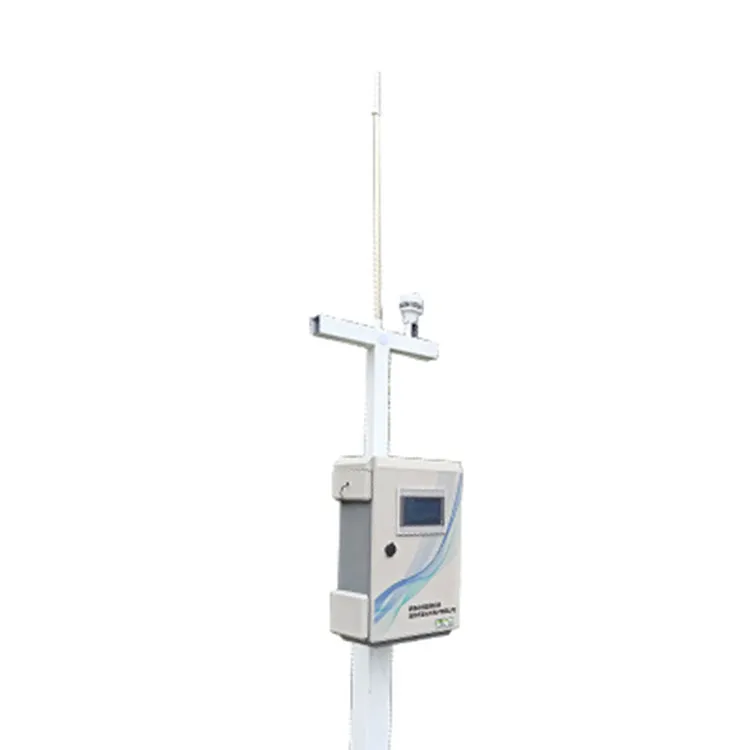- English
- Español
- Português
- русский
- Français
- 日本語
- Deutsch
- tiếng Việt
- Italiano
- Nederlands
- ภาษาไทย
- Polski
- 한국어
- Svenska
- magyar
- Malay
- বাংলা ভাষার
- Dansk
- Suomi
- हिन्दी
- Pilipino
- Türkçe
- Gaeilge
- العربية
- Indonesia
- Norsk
- تمل
- český
- ελληνικά
- український
- Javanese
- فارسی
- தமிழ்
- తెలుగు
- नेपाली
- Burmese
- български
- ລາວ
- Latine
- Қазақша
- Euskal
- Azərbaycan
- Slovenský jazyk
- Македонски
- Lietuvos
- Eesti Keel
- Română
- Slovenski
- मराठी
- Srpski језик
Innovation and application of micro air stations in the field of ecological environment monitoring
2024-11-04
With the increasingly serious global environmental problems and the significant improvement of public environmental awareness, ecological environmental problems have become increasingly prominent. Among them, air pollution, as one of the most serious challenges, not only threatens human health, but also poses a threat to the balance of the entire ecosystem. Huge pressure. In order to effectively respond to this challenge, micro air stations, as an innovative environmental monitoring equipment, have gradually become a mainstream trend in ecological environment monitoring with their advantages of low cost, high density, multi-parameters and gridding. In this article, the editor of Zetron Technology will focus on the innovation and application of micro air stations in the field of ecological environment monitoring.

1. Definition and functions of micro air station
Micro air station is a kind of miniaturized environmental monitoring equipment, usually used to monitor urban air quality. They are small in size and low in cost, but powerful in function. They can monitor a variety of air pollutants in real time, such as PM2.5, PM10, SO2, NO2, CO, O3, etc., as well as meteorological parameters such as temperature, humidity, wind speed, and wind direction. These data have important reference value for assessing environmental quality and predicting environmental change trends.
The core of the micro air station lies in its highly sensitive sensors and advanced data acquisition and processing technology. These sensors can sense the concentration of pollutants in the air in real time, and summarize, store and analyze the data through the data collection and processing unit, and finally upload the data to the cloud platform or government monitoring platform to achieve 24-hour supervision of the atmospheric environment.
2. Advantages of micro air stations
1. Low cost and high density: Compared with traditional standard stations, micro air stations use new technology and low-cost sensors, which reduces equipment and operation costs. At the same time, they can achieve high-density grid layout, full coverage within the area, and achieve high spatial and temporal resolution air pollution monitoring.
2. Multi-parameter monitoring: Micro air stations can not only monitor common air pollutants, but also integrate more particulate matter, gas parameters and meteorological parameters, such as TVOC, H2S, NH3, etc., as well as temperature, humidity, wind speed, wind direction, etc. Provide more comprehensive data support for environmental monitoring.
3. Remote monitoring and intelligent management: The micro air station supports remote terminals for remote diagnosis, remote calibration and program upgrades of the equipment, which greatly improves the convenience and efficiency of maintenance. At the same time, through the Internet of Things and big data technology, real-time uploading and intelligent analysis of monitoring data can be achieved to provide decision-making support for environmental management.
4. Flexible deployment and wide application: Micro air stations are light in weight, easy to install and maintain, and can be widely used in urban air quality monitoring stations, industrial parks, traffic arteries, schools, hospitals and other public places, as well as environmental protection departments, scientific research institutions and other units air quality monitoring and data analysis.
3. Application cases of micro air stations in ecological environment monitoring
1. Urban air quality monitoring: Taking Pinggu District in Beijing as an example, the locally established online monitoring network of micro air stations has achieved full coverage of air quality data in rural areas, effectively opening up blind spots in monitoring. Data show that the average annual concentration of PM2.5 in rural areas has dropped significantly and air quality has been significantly improved.
2. Industrial park environmental monitoring: After a chemical industry park in Chongqing enabled micro-air station network monitoring, the emissions of major pollutants such as SO2 and NOX in the park dropped significantly year-on-year, and the overall environmental air quality in the park improved. This initiative provides strong support for the park to formulate emission reduction measures.
3. Construction site boundary monitoring: Micro air stations are set up around the construction site to monitor the impact of construction activities on the air quality of the surrounding environment in real time, providing a regulatory basis for the environmental protection department to ensure that construction activities comply with environmental protection requirements.
With the continuous advancement of technology and the continuous expansion of applications, micro air stations will play a greater role and value in the field of ecological environment monitoring. In the future, micro air stations will pay more attention to the development of intelligence, automation and networking. By introducing artificial intelligence and machine learning technology, they will realize intelligent processing and analysis of monitoring data and improve the accuracy and efficiency of data processing. At the same time, with the widespread application of cutting-edge technologies such as the Internet of Things and big data, micro air stations will be better integrated into the environmental monitoring system and provide more comprehensive and refined data support for environmental protection and improvement.
In summary, as an innovative device in the field of ecological environment monitoring, micro air station is playing an important role in environmental monitoring with its unique advantages. In the future, with the continuous advancement of technology and the in-depth promotion of applications, micro air stations will play a more important role in the future and make greater contributions to protecting and improving the ecological environment and ensuring human health.







